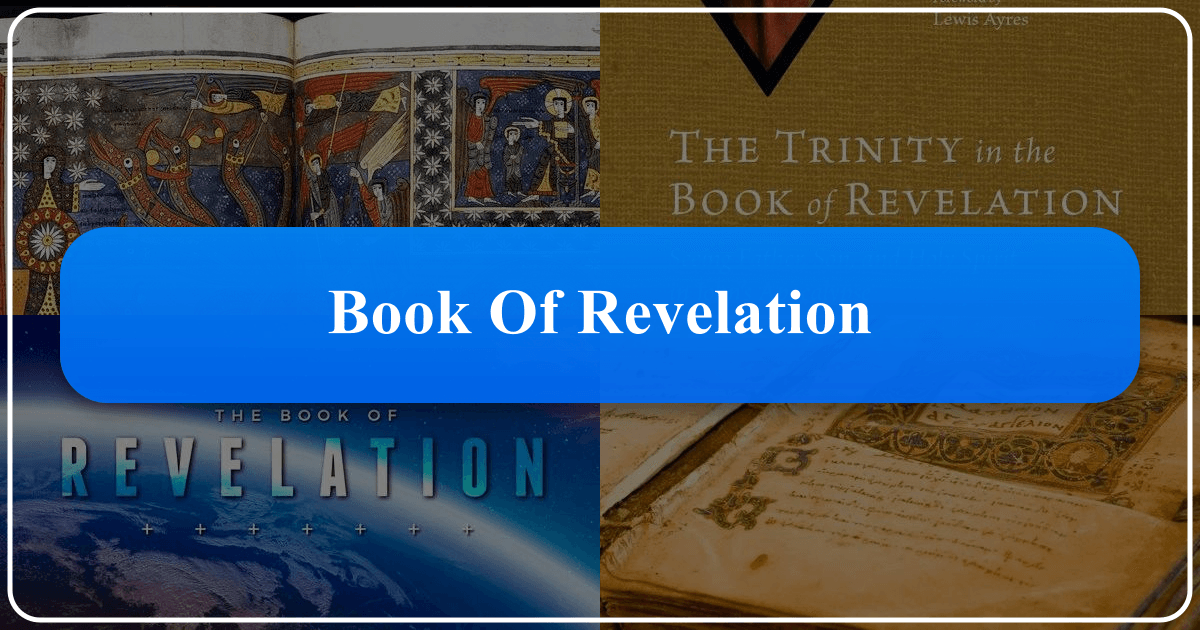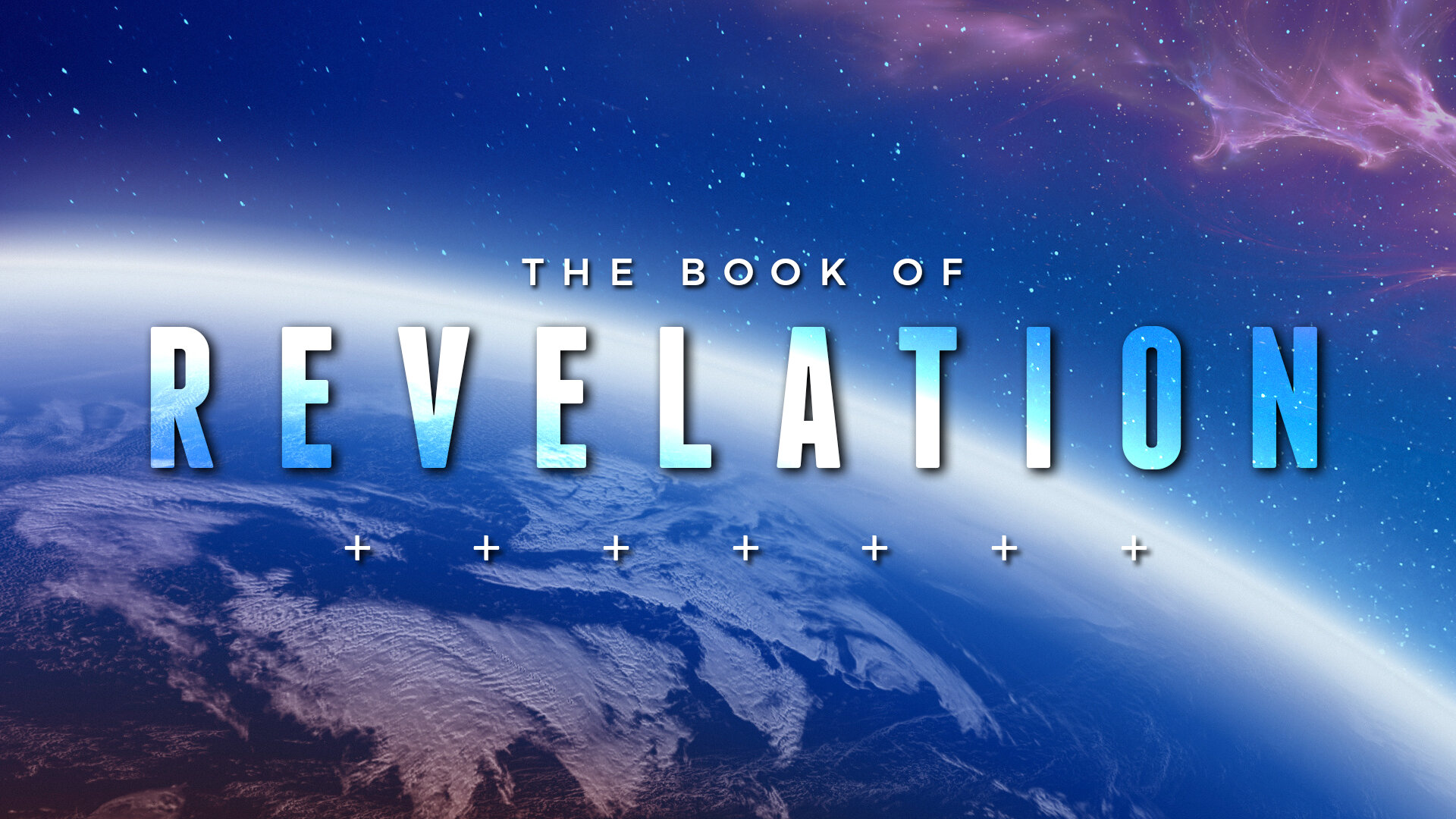The Book of Revelation: A Comprehensive Exploration Across Disciplines

The Book of Revelation, the final book of the New Testament, stands as a unique and often perplexing text within the Christian canon. Its enigmatic imagery, cryptic prophecies, and apocalyptic pronouncements have captivated and confounded readers for centuries, sparking diverse interpretations and fostering rich theological and artistic traditions. This exploration delves into the Book of Revelation, examining its multifaceted nature through the lenses of literary genre, authorial context, theological themes, historical impact, and its lasting cultural influence. We will approach the text from various perspectives, drawing upon scholarly interpretations and seeking to understand its relevance for contemporary readers.

I. The Genre of Revelation: A Multifaceted Text
Understanding the Book of Revelation necessitates grappling with its complex literary genre. It’s not simply a single type of writing; rather, it’s a composite of several literary forms interwoven to create a powerful and multi-layered message. Scholars generally agree that Revelation exhibits characteristics of three primary genres: the letter, prophecy, and apocalypse.
This epistolary nature establishes a crucial link between the author (traditionally identified as John, but debated among scholars), his specific audience (the seven churches of Asia), and their historical context within the Roman Empire. Ignoring the specifics of this context risks misinterpreting the text’s immediate and intended impact. However, the book’s inclusion in the Christian canon elevates it beyond its immediate historical setting, allowing for application to successive generations of believers.

The prophetic dimension is evident in Revelation’s use of the “thus says…” formula, echoing Old Testament prophets. John’s pronouncements derive authority not from his own status but from their direct source: God and the risen Christ. This prophetic element conveys a message of divine judgment and redemption, intended to guide and shape the lives of John’s readers.
The apocalyptic element is marked by its visionary character, revealing hidden truths about the cosmic conflict between good and evil. The vivid imagery of beasts, angels, and symbolic events depicts a transcendent reality that intersects with the earthly struggles faced by the seven churches. While Revelation shares certain similarities with other Second Temple Jewish apocalyptic texts, significant differences exist, particularly concerning authorship, historical interpretation, and ethical response. The unique nature of Revelation’s apocalypse is marked by the deliberate absence of an interpreting angel, a common feature in other Jewish apocalyptic literature, instead emphasizing the direct communication between God, Jesus, and John.

1.1 The Significance of Genre in Interpretation
Recognizing the multifaceted genre of Revelation is essential for proper interpretation. Different genres employ distinct literary conventions and make varying claims upon their readers. A historical narrative makes different demands on interpretation than a poem, a parable, or a prophetic pronouncement. Revelation’s hybrid genre underscores the importance of contextual understanding and careful attention to literary conventions as we interpret its complex symbols and narrative structure.
1.2 Authorial Context and Intended Audience
Revelation’s status as an epistle, or letter, underscores the significance of its historical context and intended audience. The seven churches addressed in the text were not abstract representations of the Church throughout history, but actual congregations facing specific challenges. Understanding their historical situation—political oppression, religious persecution, internal strife within the Christian communities—is critical to comprehending the book’s message. The book’s structure, utilizing letters to these churches, followed by more expansive visions, suggests that the author intended the specific advice to the churches to directly relate to the more extensive apocalyptic visions. The immediate and extended contexts must be considered to determine accurate application of the text to modern readers.
1.3 Canonical Authority and Inspiration
The inclusion of Revelation in the biblical canon signifies its ongoing authority and divine inspiration for the Christian faith. However, the unique genre of Revelation necessitates a nuanced approach to understanding its authority. John Goldingay’s framework of witnessing tradition, authoritative canon, inspired word, and experienced revelation offers a useful model. Revelation serves as a primary example of “experienced revelation,” reflecting John’s intimate encounter with divine reality. This understanding challenges any monolithic view of scriptural authority and calls for careful discernment in interpreting Revelation’s diverse literary forms and messages. In this perspective, the Book of Revelation, with its intense visionary experience, does not negate, but rather adds to, the other forms of scriptural authority.
II. Key Theological Themes in Revelation
Despite the complexities of its genre and imagery, several core theological themes emerge from the Book of Revelation. These themes speak to the fundamental questions of faith, offering both warnings and promises for believers across time.
The central theme revolves around the sovereignty and ultimate triumph of God and the Lamb (Jesus Christ) over all opposing forces. Despite the presence of immense suffering and evil, the narrative underscores God’s absolute power and unwavering justice. The book depicts a relentless conflict between God’s kingdom and the forces of evil, culminating in the final judgment and the establishment of a new heaven and a new earth.
Another prominent theme focuses on the nature and calling of the Church amidst persecution and suffering. The letters to the seven churches offer both correction and encouragement, reminding believers of their identity as God’s people, called to persevere through trial. Revelation highlights the importance of steadfast faith, unwavering loyalty to God, and active resistance against evil. The imagery of tribulation, kingdom, and patient endurance (Rev. 1:9) forms a programmatic theme emphasizing both the present reality of followers living in the already-but-not-yet kingdom of God and their future hope in final victory and restoration.
2.1 The Cosmic Conflict: God’s Sovereignty and Justice
The Book of Revelation portrays a cosmic struggle between God and Satan, good and evil. This conflict is not merely a spiritual battle but encompasses all of creation. The graphic depictions of destruction and judgment serve to underscore the severity of evil and God’s righteous response. The ultimate victory of God, however, reassures readers of His ultimate control and the certainty of justice. This theme offers hope amidst suffering, promising ultimate redemption and restoration.
2.2 The Church in Persecution: Faithfulness and Endurance
Revelation addresses the plight of the early Church, facing relentless persecution under Roman rule. The letters to the seven churches illustrate the challenges, both internal and external, confronting believers. The recurring emphasis on faithfulness, endurance, and perseverance reminds readers that faith in Jesus Christ is not a passive belief system, but a call to action in the face of adversity. The book’s central message affirms God’s continued presence and support for His people in their trials.
2.3 The Water of Life and the New Creation: Hope and Restoration
The repeated references to the water of life, a symbol of the Holy Spirit, promise renewal and ultimate restoration. The vision of the new heaven and the new earth, described in the final chapters, depicts a world freed from sin, death, and suffering—a future characterized by perfect peace, harmony, and communion with God. This theme offers hope and consolation, assuring believers of a glorious future beyond earthly limitations.
III. Reading Revelation Well Today: Practical Guidance
The Book of Revelation presents unique interpretative challenges. Approaching it requires both careful attention to the text and a thoughtful methodology.
First, it is vital to read Revelation as a whole, avoiding the selective focus on isolated verses or sensational imagery. The overall narrative structure is crucial to understanding the interplay between individual visions and the larger message.
Second, approaching Revelation with a community of faith enriches interpretation. Discussions with fellow believers, drawing upon diverse cultural and theological perspectives, allow for richer understanding. Engaging with historical interpretations, while recognizing the limitations of past perspectives, provides valuable insights. Studying the text alongside other books of the Bible allows for a more comprehensive understanding of its relationship to wider themes of scripture.
3.1 Avoiding Common Errors in Interpretation
Several common pitfalls undermine attempts to understand Revelation. One is the tendency to impose modern cultural frameworks or anachronistic interpretations upon the text. Another is the overemphasis on literalistic interpretations without considering the book’s rich symbolism and metaphorical language. Similarly, neglecting the historical context of the seven churches impoverishes the richness of the message. Finally, viewing Revelation solely as predictive prophecy, ignoring its moral and ethical dimensions, overlooks its primary purpose of addressing and strengthening the faith of its original audience and subsequent readers.
3.2 Utilizing Exegetical and Hermeneutical Tools
Sound interpretation requires a combination of careful exegesis and insightful hermeneutics. Exegesis, the careful study of the text itself, involves attention to literary features such as genre, structure, vocabulary, and imagery. Hermeneutics, the theory and practice of interpretation, involves understanding the text within its historical and cultural contexts. Engaging in both textual and contextual analyses is essential for forming a responsible interpretation of the Book of Revelation. This approach can then lead to identifying and implementing appropriate application of the text to modern circumstances.
IV. The Cultural Impact of Revelation
The Book of Revelation has exerted a profound and multifaceted impact on Western culture. Its vivid imagery and dramatic narrative have inspired countless artistic representations throughout history. Medieval illuminated manuscripts, Renaissance paintings, and modern films and literature all draw upon Revelation’s themes and imagery, demonstrating its enduring power to capture the imagination. The book’s influence extends beyond the artistic realm; its apocalyptic vision has shaped political thought, religious movements, and even scientific speculation.
4.1 Artistic Representations and Adaptations
The book’s compelling imagery—the four horsemen, the beast, the dragon, the new Jerusalem—has fueled creative endeavors for centuries. Artists have visually rendered Revelation’s dramatic scenes, transforming its powerful symbols into stunning works of art that communicate its message across time and cultures. This lasting artistic impact testifies to the enduring appeal of Revelation’s themes, and this impact demonstrates the power of symbolic language to engage individuals and communities.
4.2 Literary Influence and Interpretative Traditions
Revelation has deeply impacted various literary genres, from poetry and prose to film and graphic novels. Writers and filmmakers have reinterpreted the book’s themes and characters, creating diverse narratives reflecting contemporary concerns. The multiplicity of interpretations reflects the book’s rich complexity and ability to resonate across different cultural and historical backgrounds. The enduring influence of the book’s central conflict between good and evil, along with its themes of judgment and redemption, is easily observed in numerous creative endeavors.
4.3 Theological Debates and Communities
Revelation has fueled numerous theological debates and the formation of distinct interpretive communities. Differing views on the nature of prophecy, eschatology, and the symbolic language employed have led to diverse interpretations. Preterist, futurist, historicist, and idealist approaches illustrate the varied interpretations. These interpretations have shaped religious movements, cultural perspectives, and the understanding of the book’s place within the Christian tradition. This ongoing interpretive activity demonstrates the enduring power of Revelation to prompt theological reflection and shape communities of faith.
V. Conclusion: Revelation’s Enduring Relevance
The Book of Revelation, despite its apparent strangeness, retains profound relevance for contemporary readers. Its messages of God’s sovereignty, the Church’s resilience, and the promise of a new creation speak to the enduring human questions of faith, hope, and justice. Approaching it requires careful consideration of its unique literary features, a community-based approach to interpretation, and a thoughtful engagement with its enduring cultural legacy. By engaging with these considerations, modern readers can grapple with its complex messages and discover new ways to comprehend and appreciate the book’s transformative power.